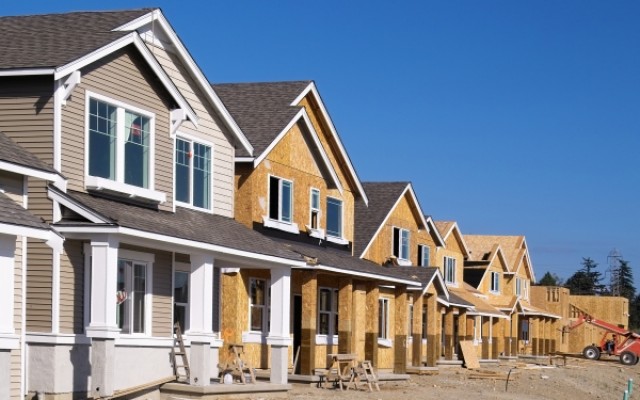The Inspections Group (TIG) is a hypothetical term that does not seem to refer to a specific known entity or process. As such, there are no established or standardised stages for TIG. However, based on general principles of inspection processes, here is a possible outline of stages that could be applicable to a generic inspection group:
It’s important to note that the specific stages and activities of an inspection process can vary depending on the nature of the entity being inspected, The scope and purpose of the inspection, and the applicable regulations or standards. Therefore, it’s recommended to refer to specific guidelines, policies, or procedures relevant to the particular inspection group or entity being inspected.
Home inspection coverage?
Home inspection coverage generally refers to the extent and scope of an inspection conducted on a residential property. Home inspections are typically performed by professional home inspectors and aim to assess the condition and functionality of various components of a home, such as its structure, electrical and plumbing systems, HVAC systems, roofing, foundation, and more.
The coverage of a home inspection can vary depending on the scope of the inspection, the qualifications and expertise of the home inspector, and any specific requirements or agreements between the parties involved.
In general, home inspection coverage may include:
- Electrical systems: This may include evaluating the home’s electrical panel, wiring, outlets, switches, and fixtures for proper functionality, safety, and compliance with relevant electrical codes.
- Plumbing systems: This may involve checking the home’s plumbing system, including pipes, drains, faucets, toilets, water heaters, and other fixtures, for leaks, proper functioning, and compliance with plumbing codes.
- HVAC systems: This may include inspecting the home’s heating, ventilation, and air conditioning (HVAC) systems, such as furnaces, air conditioners, ductwork, and thermostats, for proper operation, efficiency, and safety.
The Main Problems:
As an AI language model, I can provide information on a wide range of topics, but without specific context, it is unclear what ,The Main Problems” refer to.
The inspections Group Can you please provide more context or clarify your question so that I can better understand and provide relevant information?
If you are referring to problems in a general sense, some common main problems that individuals or organisations may encounter could include:

Financial issues: This could include problems related to budgeting, debt, investment, cash flow, or financial management.
More info: Facebook, YouTube
Health problems: This could encompass physical health issues, mental health challenges, or other medical concerns that impact well-being and quality of life.
Relationship problems: This could involve difficulties in personal relationships, such as conflicts, communication breakdowns, or challenges in maintaining healthy relationships with family, friends, or romantic partners.
It’s important to note that the specific main problems can vary widely depending on individual circumstances, cultural context, and other factors. If you are facing specific problems or challenges, it’s recommended to seek appropriate professional help or advice from qualified experts or relevant authorities.
Plumbing problems
Plumbing problems are issues related to the installation, maintenance, or functioning of a building’s plumbing system, which includes pipes, fixtures, drains, valves, and other components that are responsible for the supply and distribution of water and the disposal of wastewater. Some common plumbing problems include:
Leaking pipes or faucets: Leaking pipes or faucets can result in water waste, water damage, and increased water bills. Leaks can occur in various areas of the plumbing system, such as pipes, joints, valves, or fixtures, and may require repairs or replacements.
Clogged drains: Clogged drains can occur in sinks, showers, bathtubs, or toilets due to the accumulation of debris, hair, grease, soap scum, or other substances. Clogged drains can cause slow drainage, unpleasant odors, and backups, and may require clearing or cleaning to restore proper flow.
Blocked or overflowing toilets: Blocked or overflowing toilets can be caused by toilet paper, excessive waste, or foreign objects that become lodged in the toilet drain. This can result in toilet backups, flooding, and unsanitary conditions that require clearing and sometimes repairs.
final thought
In conclusion, house inspections are a critical step in the process of buying or selling a home. They are designed to assess the condition of a property and identify any potential issues or defects that may affect its value, safety, or livability. House inspections typically cover various areas of a property, including its structure, foundation, roof, plumbing, electrical, HVAC systems, and more.
The findings from a house inspection can provide valuable information to help buyers make informed decisions about a property and negotiate repairs or price adjustments, while also providing sellers with an opportunity to address any issues before listing their property for sale. It’s essential to hire a qualified and experienced home inspector to conduct a thorough inspection and provide a detailed report. Overall, a house inspection is an important step in the real estate process to ensure that a property is in good condition and meets the expectations of both buyers and sellers.
Key Property Inspection Group
 Financial issues: This could include problems related to budgeting, debt, investment, cash flow, or financial management.
More info: Facebook, YouTube
Health problems: This could encompass physical health issues, mental health challenges, or other medical concerns that impact well-being and quality of life.
Relationship problems: This could involve difficulties in personal relationships, such as conflicts, communication breakdowns, or challenges in maintaining healthy relationships with family, friends, or romantic partners.
It’s important to note that the specific main problems can vary widely depending on individual circumstances, cultural context, and other factors. If you are facing specific problems or challenges, it’s recommended to seek appropriate professional help or advice from qualified experts or relevant authorities.
Financial issues: This could include problems related to budgeting, debt, investment, cash flow, or financial management.
More info: Facebook, YouTube
Health problems: This could encompass physical health issues, mental health challenges, or other medical concerns that impact well-being and quality of life.
Relationship problems: This could involve difficulties in personal relationships, such as conflicts, communication breakdowns, or challenges in maintaining healthy relationships with family, friends, or romantic partners.
It’s important to note that the specific main problems can vary widely depending on individual circumstances, cultural context, and other factors. If you are facing specific problems or challenges, it’s recommended to seek appropriate professional help or advice from qualified experts or relevant authorities.

